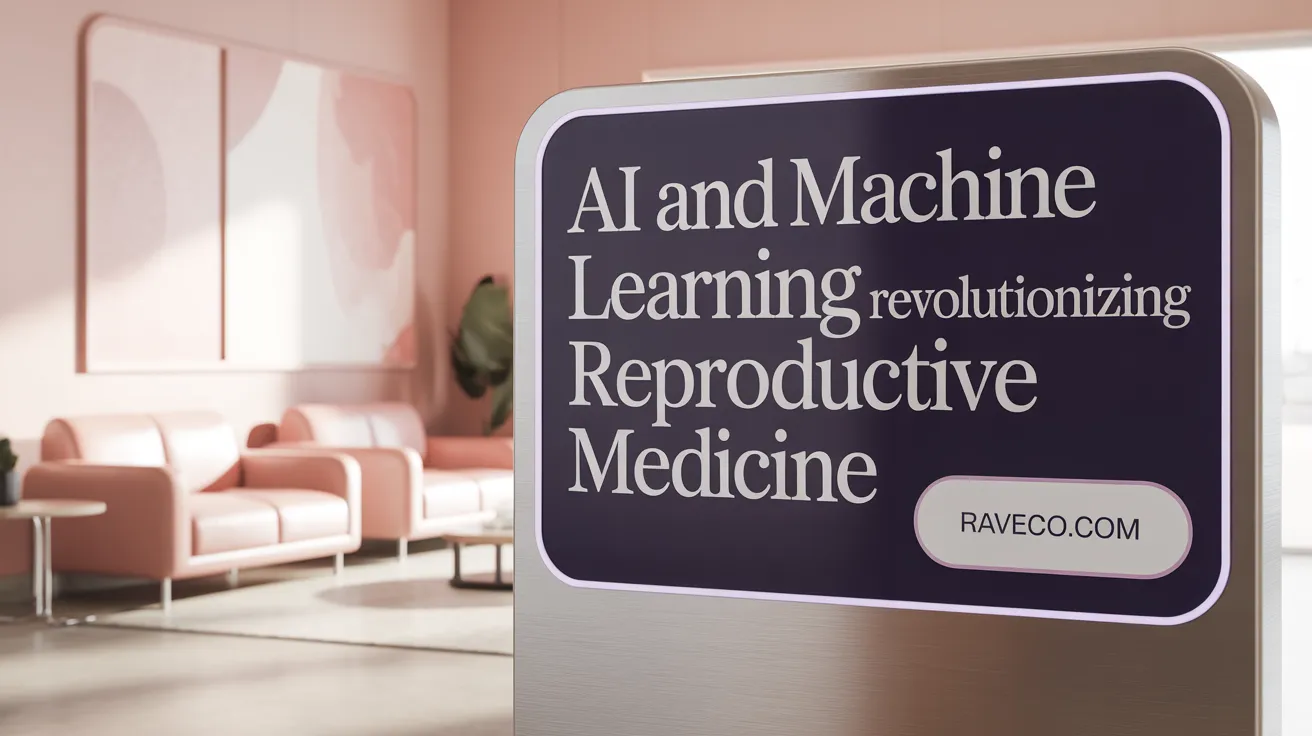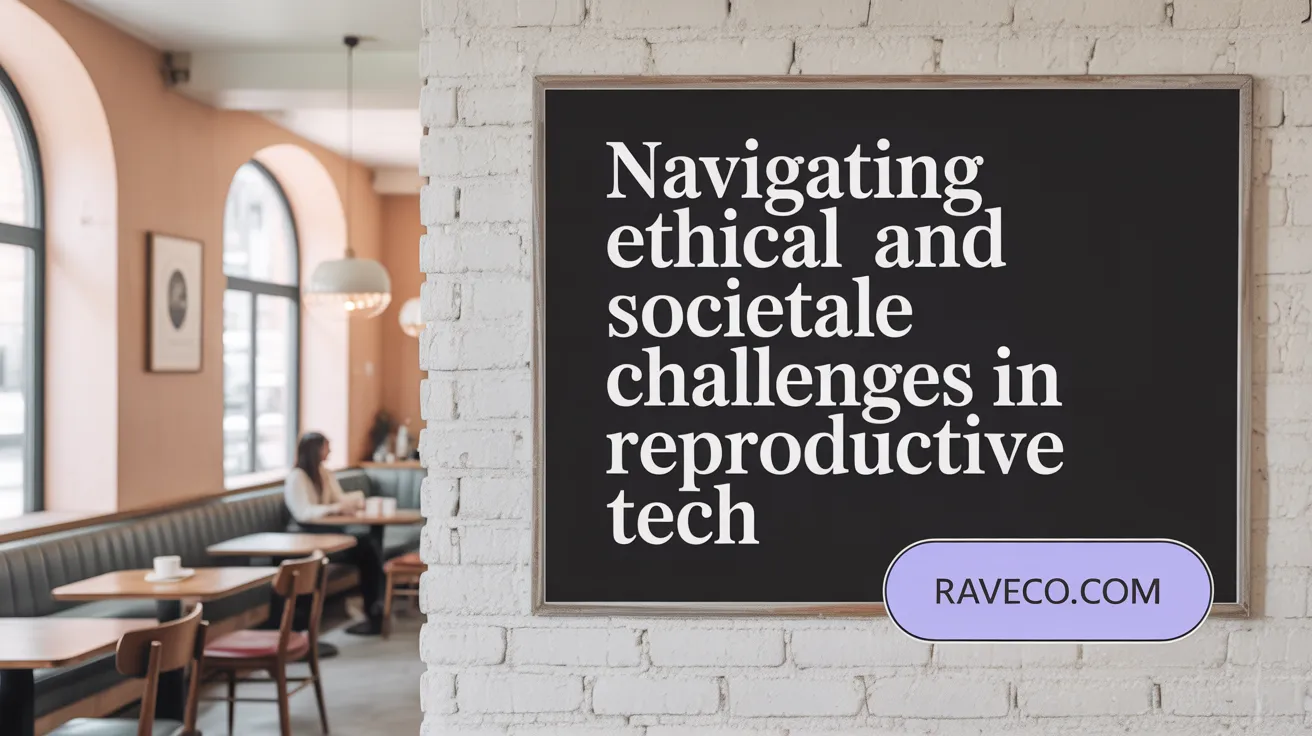Celebrating Courage: 8 Powerful Testimonials of Women's Gynecological Health Triumphs

Introduction to Modern Fertility Treatments
Infertility affects millions globally, prompting continuous innovation in assisted reproductive technologies (ART). Recent advances have transformed infertility care, making conception increasingly attainable through refined diagnostic methods, cutting-edge laboratory techniques, and emerging futuristic therapies. This article explores the evolving landscape of ART, emphasizing breakthroughs in IVF, genetic screening, artificial intelligence applications, and emerging reproductive technologies shaping fertility treatment in 2024 and beyond.
Recent Scientific and Technological Advances in Assisted Reproductive Technologies

Overview of ART advancements
Recent years have seen remarkable progress in the field of assisted reproductive technologies (ART). Innovations such as improved embryo culture systems, vitrification cryopreservation techniques, and non-invasive preimplantation genetic testing have significantly increased success rates. These technological developments allow for better embryo viability assessment, lower embryo damage during freezing, and more accurate genetic screening, reducing the risk of hereditary diseases.
Improvements in IVF protocols
In vitro fertilization (IVF) techniques continue to evolve with enhancements in controlled ovarian hyperstimulation and embryo culture conditions. Innovations include microfluidic 'IVF-on-a-chip' systems that mimic natural reproductive environments and advanced time-lapse incubators equipped with AI for continuous embryo monitoring. Additionally, ovarian tissue cryopreservation and in vitro maturation are expanding fertility preservation options, particularly for women facing gonadotoxic treatments like chemotherapy.
Genetic screening innovations
Preimplantation genetic testing (PGT), including PGT-A (for aneuploidy), PGT-M (for monogenic disorders), and PGT-SR (for structural rearrangements), has become more comprehensive and accurate. These tests improve embryo selection by identifying chromosomal abnormalities at early stages, thus increasing live birth rates and minimizing miscarriage risks. Researchers are also developing non-invasive techniques that analyze cell-free DNA in embryo culture media, further reducing the need for invasive biopsies.
Stem cell and gene editing research
Stem cell research is progressing towards generating in vitro gametes from pluripotent stem cells through in vitro gametogenesis (IVG). Successful demonstrations in animal models suggest future potential for creating eggs and sperm in the lab, which could benefit individuals with no viable gametes. Gene editing technologies like CRISPR-Cas9 are being explored to correct genetic mutations, offering hope for preventing heritable disorders. However, ethical considerations and safety remain central to progressing these approaches.
Integration of AI and machine learning
Artificial intelligence (AI) and machine learning are transforming ART by personalizing treatment protocols, automating embryo and gamete assessment, and optimizing laboratory workflows. AI algorithms analyze large datasets, including time-lapse images and genetic data, to predict embryo viability with high accuracy—up to 92%. AI also supports customizing ovarian stimulation regimens, reducing medication use and improving outcomes. While promising, validation across diverse populations and ethical considerations are ongoing.
Emerging fertility therapies
Innovative therapies such as mitochondrial replacement (creating 'three-parent babies') and bioengineered ovarian tissue aim to address underlying causes of infertility. Stem cell-driven regeneration of ovarian tissue and in vitro gametogenesis hold the potential to expand fertility options for women of advanced age or with gonadal failure. Moreover, future advances might include artificial wombs and organoid models, opening new avenues for reproductive medicine.
| Aspect | Recent Innovations | Future Directions | Additional Notes |
|---|---|---|---|
| IVF Protocols | Enhanced embryo culture, microfluidic systems, time-lapse incubation | Automation, personalized protocols | Aimed at increasing success, reducing costs |
| Genetic Screening | More comprehensive PGT, non-invasive cell-free DNA analysis | Broader genetic insights, safer testing | Reduces risks, enhances embryo selection |
| Stem Cell & GeneTech | In vitro gametogenesis, gene editing (CRISPR) | Clinical trials, ethical frameworks | Potential to create gametes, correct mutations |
| AI & Machine Learning | Embryo viability assessment, workflow optimization | Algorithm validation, AI integration | Promises better outcomes, personalization |
These ongoing developments in ART are poised to revolutionize reproductive medicine, offering hope to millions worldwide seeking fertility solutions. However, their clinical implementation requires careful regulation and ethical scrutiny to ensure safety and societal acceptance.
Comprehensive Diagnosis and Management of Infertility with Current Technologies

How is infertility diagnosed, managed, and treated comprehensively with current technologies?
Infertility diagnosis begins with a thorough assessment of both partners, involving a variety of modern diagnostic tools. For women, hormone testing for infertility evaluates ovulatory function, while imaging studies such as hysterosonography procedure, hysteroscopy examination, ultrasound for male infertility, and MRI assess the reproductive organs' structure and identify possible blockages or abnormalities.
For men, semen analysis is crucial to evaluate sperm count, motility, and morphology. Genetic testing for infertility can reveal chromosomal abnormalities or genetic disorders contributing to infertility. These evaluations help identify underlying causes, including ovulatory disorders, endometriosis, or structural issues.
Management strategies encompass lifestyle modifications—like maintaining a healthy weight, quitting smoking, and limiting alcohol consumption—that can improve natural fertility. Medical treatments include ovulation induction using medications such as clomiphene, letrozole, or gonadotropins, tailored to each individual's hormonal profile. Surgical procedures may be necessary to repair damaged fallopian tubes, remove endometrial cysts, or correct structural abnormalities.
For cases where conventional treatments are not effective, assisted reproductive technologies (ART), especially in vitro fertilization (IVF), are frequently employed. Techniques like intracytoplasmic sperm injection (ICSI) address severe male infertility by directly injecting a sperm into an egg.
Emerging approaches involving genetic editing or the development of artificial gametes from stem cells are still in early experimental stages but hold promise for future applications. Moreover, personalized medicine, guided by genetic profiling and biomarker analysis, increasingly shapes treatment plans to enhance success rates and minimize invasive interventions.
In summary, the integration of advanced diagnostics, minimally invasive treatments, and cutting-edge ART procedures allows for a comprehensive, individualized approach to overcoming infertility, aiming to facilitate healthy, successful pregnancies.
Innovations and Research Progress in IVF and Related Infertility Treatments

Recent advancements in infertility treatments, particularly in vitro fertilization (IVF), have revolutionized reproductive medicine. Innovations include improved IVF success rates improvements, improved IVF protocols that emphasize better embryo culture to blastocyst stage conditions and the development of advanced preimplantation genetic testing (PGT). PGT now allows for comprehensive chromosomal screening, reducing miscarriage rates and increasing the likelihood of healthy pregnancies.
Cryopreservation technology has also seen significant enhancements, with vitrification cryopreservation techniques enabling high survival rates of eggs and embryos after thawing. This improvement offers greater flexibility for fertility preservation and subsequent treatment cycles.
On the frontier of regenerative medicine, stem cell therapies and ovarian rejuvenation strategies such as platelet-rich plasma (PRP) are under investigation. These approaches aim to restore or extend ovarian function, potentially benefiting women with diminished ovarian reserve or age-related fertility decline.
A groundbreaking area of research is in vitro gametogenesis (IVG), which involves creating eggs and sperm from somatic cells. Initial success in animal models suggests that IVG could provide new options for individuals unable to produce viable gametes, including women of advanced age and same-sex couples seeking genetic parenthood.
Robotic-assisted surgical interventions have improved precision in procedures such as tubal repair and endometriosis treatment, minimizing complications and promoting better fertility outcomes.
Overall, research into microfluidic systems, AI-powered embryo selection, and genetic editing continues to expand the scope of fertility treatments. These innovations aim to increase success rates, minimize risks, and broaden reproductive options for diverse patient populations.
| Technique/Innovation | Application/Benefit | Future Outlook |
|---|---|---|
| Improved IVF protocols | Higher embryo quality and success | Routine in clinics |
| PGT advancements | Reduced miscarriage, healthier pregnancies | Standard in IVF |
| Vitrification techniques | Higher cryopreservation success | Widely adopted |
| Stem cell/ovarian rejuvenation | Restoring ovarian function | Experimental but promising |
| In vitro gametogenesis | Creating gametes from somatic cells | Cutting-edge, future potential |
| Robotic surgery | Precise fertility surgeries | Increasing adoption |
| AI embryo selection | Faster, more accurate embryo grading | Expected to become standard |
In conclusion, ongoing research and technological innovation are shaping a future where infertility treatments are more effective, personalized, and accessible, offering hope to many couples worldwide.
Enhancing IVF Success: Scientific and Technological Improvements

What scientific and technological improvements have been made in IVF procedures to enhance success rates?
Since the first successful IVF birth in 1978, the field has seen remarkable progress that continually boosts IVF success rates improvements. One major advance is in controlled ovarian stimulation (COS). The development of refined protocols using recombinant gonadotropins, GnRH agonists and antagonists has allowed for better scheduling and control of ovulation, resulting in the retrieval of more mature eggs and improved chances of fertilization.
In embryology, culturing embryos to the blastocyst stage has become routine, which helps select the most viable embryos for transfer. This practice not only increases the likelihood of implantation but also reduces multiple pregnancy risks by enabling blastocyst transfer benefits.
Another critical advancement is the use of preimplantation genetic testing (PGT). Techniques such as PGT-A screen embryos for chromosomal abnormalities, allowing selection of genetically healthy embryos, thereby improving success rates and reducing miscarriage risks.
Cryopreservation methods, especially vitrification, have significantly increased the survival rates of eggs and embryos after freezing and thawing, expanding options for delayed embryo transfer and fertility preservation.
Emerging technologies such as artificial intelligence (AI) in IVF are now being integrated into IVF labs. AI-based algorithms analyze time-lapse imaging, sperm quality, and embryo morphology to predict viability with high accuracy, thereby aiding embryologists in making better selections.
Moreover, lab-on-a-chip and microfluidic technologies automate critical procedures like sperm sorting and embryo culture. These innovations improve precision, reduce human error, and facilitate more standardized and accessible treatments.
Looking ahead, future strategies include gene editing to correct genetic defects, personalized treatment protocols tailored through genetic profiling, and automation of entire IVF workflows. These developments promise to not only further raise success rates but also make IVF more efficient and widely available.
Continued research and technological integration are essential to address remaining challenges and ensure safer, more effective fertility treatments for couples worldwide.
The Transformative Role of Artificial Intelligence and Machine Learning in ART

How are artificial intelligence, machine learning, and deep learning impacting assisted reproductive technologies?
Artificial intelligence (AI), machine learning (ML), and deep learning (DL) are revolutionizing assisted reproductive technologies by enabling more accurate, efficient, and personalized fertility treatments. These advanced technologies analyze vast amounts of data, including embryo images, sperm parameters, and hormonal responses, to improve decision-making processes.
In embryo and sperm analysis, AI tools utilize image recognition algorithms to objectively evaluate morphology, motility, and viability, reducing human subjectivity and increasing consistency. For instance, AI-driven embryo assessment systems such as icONE and ERICA have demonstrated higher prediction accuracy for implantation success—reaching up to 77.3% and 92%, respectively—compared to traditional methods.
Personalized ovarian stimulation protocols are another area where AI makes a significant impact. Machine learning models analyze patient-specific data—like hormone levels and ovarian reserve markers—to optimize gonadotropin dosing, potentially reducing medication use by 20% and improving oocyte yield. These tailored approaches enhance the efficiency of IVF cycles and minimize risks such as ovarian hyperstimulation syndrome.
Workflow automation in IVF laboratories is increasingly reliant on AI and robotics, which streamline processes such as sample tracking, culture monitoring, and embryo grading. Technologies like radio-frequency identification (RFID) ensure sample integrity, while deep learning algorithms continuously analyze embryo development in time-lapse incubators. This integration reduces human workload, increases throughput, and enhances success rate predictions.
Despite these promising applications, challenges persist. Variability in data quality, potential algorithmic bias, and the need for extensive validation through large, multicenter studies pose hurdles. Ethically, issues regarding data privacy, informed consent, and transparency demand ongoing attention.
Currently, validation efforts are underway, with several AI tools undergoing clinical trials and regulatory review. More comprehensive research is required to confirm AI's efficacy in improving live birth rates and to establish standardized protocols.
In summary, AI, ML, and DL are profoundly impacting ART by increasing precision, efficiency, and personalization. As these technologies evolve, rigorous validation, ethical considerations, and clear regulatory pathways will be vital to fully harness their potential—making fertility treatments more successful and accessible for everyone.
Advancements in Genetic Screening, Automation, and Emerging Technologies in Fertility Care

Recent progress in fertility technology has profoundly transformed reproductive medicine, improving success rates and offering more tailored treatment options.
One of the most notable developments is high-resolution preimplantation genetic testing (PGT), which allows for detailed screening of embryos before transfer. PGT can identify chromosomal abnormalities and genetic disorders with greater accuracy, thanks to advancements in microarray and next-generation sequencing techniques. This has led to higher implantation rates and fewer miscarriages.
More recently, non-invasive genetic testing methods (niPGT) analyze cell-free DNA in embryo culture media, reducing the need for invasive biopsies. These approaches are improving the safety and reliability of embryo assessment, making genetic screening more accessible and less stressful for patients.
Automation is also revolutionizing fertility clinics. Automated sperm analysis systems assess motility, morphology, and DNA integrity with high precision, reducing observer variability. In embryology labs, robotics handle tasks such as embryo culture, vitrification (cryopreservation), and sample tracking — processes that once relied heavily on manual labor, now streamlined to minimize human error.
Time-lapse imaging systems monitor embryo development continuously, capturing morphological changes over time. When combined with artificial intelligence (AI), these systems—like the BELA platform—can analyze morphokinetic data to predict embryo viability and ploidy status more accurately than traditional evaluations.
Personalized treatment strategies are increasingly adopted, including endometrial receptivity assessment with diagnostic arrays and ultrasound, helping to determine the optimal timing for embryo transfer. These tools ensure that the embryo is implanted when the uterine environment is most receptive, further improving success rates.
The integration of these cutting-edge technologies in fertility care makes treatments safer, more effective, and accessible to a broader patient population. As research continues, innovations like lab-on-a-chip microfluidic systems and AI-driven models are poised to make reproductive treatments even more precise, ultimately enhancing the likelihood of successful pregnancies.
Ethical, Societal, and Future Perspectives in Reproductive Medicine

Reproductive technologies have transformed the landscape of fertility treatment, but they also bring complex ethical and societal questions.
One of the foremost ethical issues involves the moral status of early human embryos. Debates center around how embryos should be treated, their rights, and the implications of manipulating or destroying them for research or treatment purposes. Genetic editing techniques such as CRISPR and preimplantation genetic diagnosis (PGD) offer the possibility of selecting or modifying embryos, raising concerns over consent, eugenics, and the potential for creating designer babies.
Societally, these advances raise questions about access and equity. Advanced treatments like in vitro gametogenesis, AI-driven embryo selection, and fertility preservation are often costly and not universally available, risking increased societal disparities. Different countries' regulatory frameworks influence the extent to which reproductive technologies can be used. For example, laws regarding embryo research, surrogacy, and donor anonymity vary greatly based on cultural and religious values, shaping societal perceptions and legal rights.
Furthermore, the possibility of creating 'three-parent' babies through mitochondrial transfer or generating gametes from somatic cells prompts legal and moral debates about identity, lineage, and parenthood.
Looking ahead, future directions focus on improving success rates and safety. Innovations such as microfluidic embryo culture, non-invasive genetic testing, and artificial wombs hold promise but require careful ethical and regulatory oversight. Responsible development involves balancing the pursuit of scientific advancement with respect for human rights, privacy, and societal morals.
In summary, as reproductive technologies continue to evolve rapidly, they necessitate a thoughtful integration of scientific, ethical, and legal considerations to ensure they serve humanity responsibly. Developing comprehensive ethical frameworks, promoting fair access, and engaging society in policy discussions are crucial steps to prevent misuse and ensure the fair and safe application of these powerful tools.
Conclusion: Embracing Innovation with Responsibility
The landscape of assisted reproductive technologies continues to evolve rapidly, fueled by scientific breakthroughs and technological innovation. Advances in IVF protocols, genetic screening, and embryo assessment have significantly improved success rates, offering renewed hope to countless individuals and couples facing infertility. The integration of artificial intelligence and automation promises to further refine personalized treatment and clinical efficiency. Meanwhile, emerging techniques like in vitro gametogenesis and gene editing highlight a future rich with potential, albeit one that requires careful ethical consideration and vigilant regulation. As ART expands access and capabilities, the commitment to patient safety, equitable availability, and responsible innovation remains paramount to ensure that the promise of reproductive medicine benefits all who seek it.





.png)